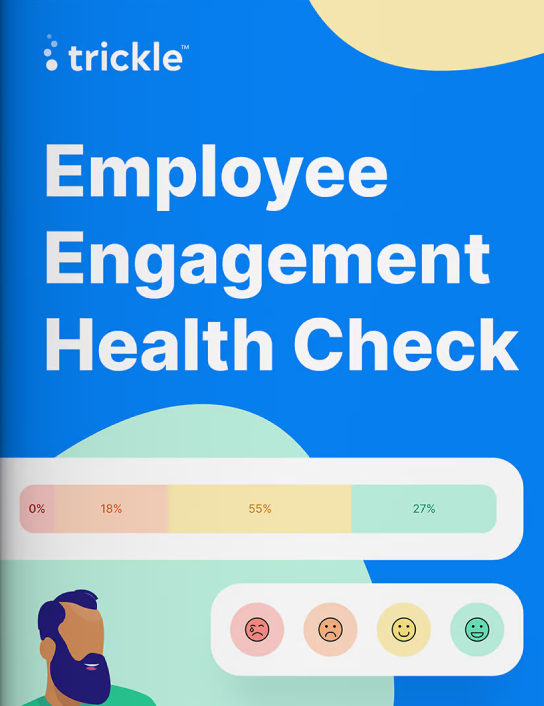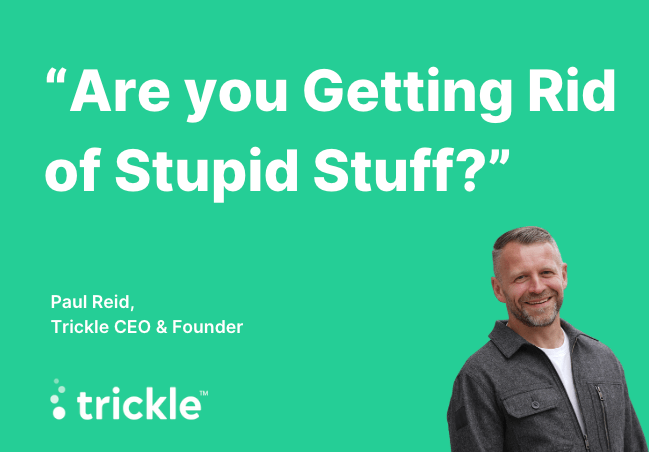How well does your company engage its employees?
Take your health check and find out.


Are you looking for a way to embed continuous improvement in your organisation at the same time as increasing staff morale and retention rates? If you answered yes, have you heard about GROSS?
GROSS stands for Get Rid of Stupid Stuff. Believed to have originated in Singapore General Hospital, it centres around recognising and responding to those seemingly small but ‘stupid’ issues that frustrate your employees – the niggles that leaders may not even be aware of but impact your team’s day-to-day efficiency and/or wellbeing, such as:
In isolation, these issues seem minor. However, if they’re not addressed, they can quickly add up, creating inefficiencies across your organisation and leading to staff becoming frustrated, disengaged and, ultimately, impacting on your staff retention rates and productivity.
The purpose of GROSS is to open up conversations with your employees as part of everyday work, so you can surface emerging issues while they’re still relatively small and rapidly take action to ‘get rid of stupid stuff’ before a minor irritation snowballs into a larger issue.
GROSS is essentially built around asking: what are we doing that could be done better with some simple tweaks? Can we talk about it and understand if there is anything we can do to change it?
We’ve broken this down into five steps, to help you put the idea into practice.
Important note: This is not about setting up new cumbersome procedures. The focus of GROSS is making fast, rapid micro-improvements part of your everyday work – meaning that it’s really important to make it as quick and straightforward as possible. Much of what we’ve set out below could be covered during a 5-10 minute segment of an existing team meeting.
The starting point for GROSS is holding conversations with employees about what they feel needs to be changed or could be improved.
How you conduct these conversations will depend on the size and structure of your organisation – but make it as quick and easy as possible. The focus is on generating feedback fast, not setting up new cumbersome procedures. For example, you might:
The critical point is that you ask your employees what matters most to them right now, give them a safe space to raise their issues and listen to their responses.
The next step is to rapidly evaluate and prioritise the points raised, so you can feel confident that you know (rather than assume) what matters most to your employees.
Again, focus on making it as fast and straightforward as possible. Examples of approaches that we’ve seen working effectively include:
Once you’ve identified the top priorities for your employees, it’s time to engage on progressing towards improvements and solutions.
Clearly the solutions will vary depending on the issues that have been prioritised. However, we recommend you:
Feeding back on the actions you’ve taken (and just as importantly, actions that you are perhaps unable to take right now) is an essential part of the process. It demonstrates to your staff that their voices are valued and helps build up their sense of belonging in the workplace.
To ensure this part of the process is as valuable as possible:
It’s really important that you don’t see GROSS as a one-off activity. Its real benefit comes through the regular frequency and cumulative impact of numerous small, fast improvements as the activity is repeated time and again within your organisation.
To help encourage open conversations:
Here at Trickle, we’ve seen numerous instances of organisations using the GROSS approach of rapid small improvements to improve productivity and staff morale.
To give just one example, one healthcare organisation we work with told us about a doctor who was incredibly frustrated with the 30-minute wait they (and their patients) experienced each time they carried out a common diagnostic test.
Rather than feeling that they could not challenge the status quo, the doctor raised this as an idea via the Trickle platform. Trickle highlighted to senior leadership that many colleagues felt the same frustration, and following discussion with staff within the Trickle platform, a workaround was created within seven weeks. Today, the results from this test are produced in near real-time.
This seemingly minor change helped build trust in the approach, improved morale and also enabled doctors to do more with their available time – in turn helping to improve patient outcomes. In addition, this change saved this organisation an estimated £25,000 in time saved.
What is even more remarkable is that this saving arose from just one of more than 180 employee-led conversations that team had that year. While not every solution reached made such a financially quantifiable outcome, they each added to the cumulative impact on staff morale, engagement and retention.
One of the huge benefits of GROSS is that it’s not about full-scale organisational transformations that require long lead times, teams of consultants and huge levels of time and resource.
Rather, GROSS focuses on rapid micro-improvements – with its real value often coming from giving staff an opportunity to talk about what matters most to them, showing that you’re listening and then talking to them about what could happen next.
You don’t need a budget to open up conversations and implement micro-transformations. You simply need to encourage your employees to get comfortable with saying: let’s talk about the stupid stuff that we’re doing and see how we can make it better. Start doing that and you might be surprised at how quickly continuous improvement becomes the norm.
Paul Reid, CEO & Founder of Trickle, recently discussed the concept of GROSS with Lucia Knight at the 2024 Joy of Work Summit. Click here to listen to the 10 minute interview.